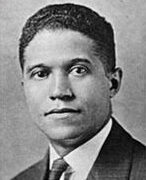John Campbell Dancy, Jr. headed the Detroit Urban League through the tumultuous years of the Great Migration, Great Depression, and World War II. He was born into a prominent family in North Carolina who steered him to the north to obtain degrees from Phillips-Exeter Academy in 1906 and the University of Pennsylvania in 1910. After graduation, Dancy returned south to become secretary of a segregated YMCA branch in Norfolk, Virginia. There he began to realize the importance of recreation for urban African Americans excluded from public and private facilities. In 1916 he returned north to work as a probation officer in New York City, where he became interested in the National Urban League. Two years later, the League asked him to serve as the second director of the Detroit Urban League, which was experiencing a massive influx of southern migrants.
In his new role in Detroit, Dancy used racial uplift ideology to shape the Urban League’s programs. He sought to train and place talented African American workers in places of prominence in the city as white-collar workers, teachers, and doctors. Dancy also pioneered recreational programs for black migrants, who, he feared, would be lured into disreputable commercial leisure. He opened a community center in the heart of the black East Side that served as a baby clinic, job placement office, and cultural center. Working closely with prominent black ministers, Dancy also forged a relationship with the Ford Motor Company by placing qualified black workers into factories.
By the 1930s, African American activists were increasingly critical of Dancy’s accommodationism to white employers. African American women could not break into white-collar labor beyond the few token jobs carefully arranged by Dancy. In addition, Dancy’s close relationship with auto industry executives hampered the efforts of United Auto Workers organizers to appeal to black auto workers. Nevertheless, Detroit’s migrant generation found the Urban League an essential resource and Dancy a comforting presence. Dancy led the Detroit Urban League for forty-two years, finally retiring in 1960.

